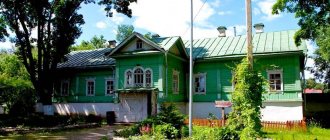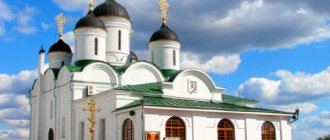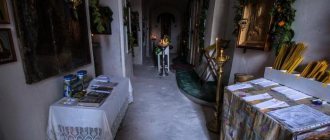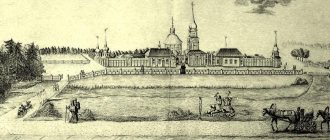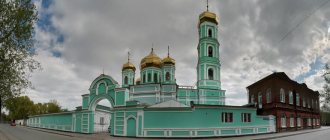Mir
Russia Vologda Region Vologda Spaso-Prilutsky Monastery Map loading in progress...
{"format":"leaflet","minzoom":false,"maxzoom":false,"limit":50,"offset":0,"link":"all","sort":[""], "order":[],"headers":"show","mainlabel":"","intro":"","outro":"","searchlabel":"\u2026 \u0441\u043b\u0435\ u0434\u0443\u044e\u0449\u0438\u0435 \u0440\u0435\u0437\u0443\u043b\u044c\u0442\u0430\u0442\u044b","default":"","import-annotation":false,"width ":"auto","height":"350px","centre":{"text":"","title":"""link":"""lat":59.26222200000000128738975035957992076873779296875,"lon": 39.889443999999997458871803246438503265380859375,"icon":""},"title":"","label":"","icon":"","lines":[],"polygons":[],"circles":[ ],"rectangles":[],"copycoords":false,"static":false,"zoom":8,"defzoom":14,"layers":["OpenStreetMap"],"image layers":[] ,"overlays":[],"resizable":false,"fullscreen":true,"scrollwheelzoom":true,"cluster":false,"clustermaxzoom":9,"clusterzoomonclick":true,"clustermaxradius":80, "clusterspiderfy":true,"geojson":"","clicktarget":"","showtitle":true,"hidenamespace":false,"template":"","userparam":"","activeicon": "","pagelabel":false,"ajaxcoordproperty":"","ajaxquery":"","locations":[{"text":"\u003Cb\u003E\u003Ca href=\"/palomnik/%D0% A1%D0%BF%D0%B0%D1%81%D0%BE-%D0%9F%D1%80%D0%B8%D0%BB%D1%83%D1%86%D0%BA%D0%B8 %D0%B9_%D0%BC%D1%83%D0%B6%D1%81%D0%BA%D0%BE%D0%B9_%D0%BC%D0%BE%D0%BD%D0%B0%D1 %81%D1%82%D1%8B%D1%80%D1%8C\" title=\"\u0421\u043f\u0430\u0441\u043e-\u041f\u0440\u0438\u043b\u0443\u0446\u043a\ u0438\u0439 \u043c\u0443\u0436\u0441\u043a\u043e\u0439 \u043c\u043e\u043d\u0430\u0441\u0442\u044b\u0440\u044c\»\u003E\u0421\ u043f\u0430\u0441\u043e- \u041f\u0440\u0438\u043b\u0443\u0446\u043a\u0438\u0439 \u043c\u0443\u0436\u0441\u043a\u043e\u0439 \u043c\u043e\u043d\u0430\ u0441\u0442\u044b\u0440\u044c \u003C/a\u003E\u003C/b\u003E\u003Chr /\u003E\u003Ca href=\»/palomnik/%D0%A1%D0%B2%D0%BE%D0%B9%D1%81%D1%82 %D0%B2%D0%BE:%D0%90%D0%BD%D0%BD%D0%BE%D1%82%D0%B0%D1%86%D0%B8%D1%8F\» title=\ »\u0421\u0432\u043e\u0439\u0441\u0442\u0432\u043e:\u0410\u043d\u043d\u043e\u0442\u0430\u0446\u0438\u044f\»\u003E\u0410\u043 d\u043d\u043e\u0442 \u0430\u0446\u0438\u044f\u003C/a\u003E: \u043c\u0443\u0436\u0441\u043a\u043e\u0439 \u043f\u0440\u0430\u0432\u043e\u0441\u04 3b\u0430\u0432\u043d\ u044b\u0439 \u043c\u043e\u043d\u0430\u0441\u0442\u044b\u0440\u044c \u0432 \u0412\u043e\u043b\u043e\u0433\u043e\u0434\u0441\u 043a\u043e\u0439 \u043e\u0431\ u043b\u0430\u0441\u0442\u0438.","title":"\u0421\u043f\u0430\u0441\u043e-\u041f\u0440\u0438\u043b\u0443\u0446\u043a\u0438\u0439 \u 043c\u0443 \u0436\u0441\u043a\u043e\u0439 \u043c\u043e\u043d\u0430\u0441\u0442\u044b\u0440\u044c","link":"""lat":59.262222000000001287389750 35957992076873779296875,"lon":39.889443999999997458871803246438503265380859375," icon":""}],"imageLayers":[]}
59.262368; 39.889753
Russia, Vologda, Priluki microdistrict, Monastyrskaya street, 2
Vologda, Vologda region
Russia
Phone number for ordering excursions
: (8172) 55-92-24
Spaso-Prilutsky Monastery
- a male Orthodox monastery in the Vologda region.
History[edit]
Spaso-Prilutsky Monastery in ancient times
Saints:
- Dimitry Prilutsky
- Ignatius Prilutsky
The monastery was founded in 1371 by Demetrius, the closest follower of St. Sergius of Radonezh. Demetrius took monastic vows at the Dormition Goritsky Monastery, and soon, having accepted the priesthood, founded the nearby St. Nicholas Monastery “on the Swamp” and became its abbot.
The construction of the monastery found support from Dmitry Donskoy. Dmitry Donskoy donated funds for the construction of the monastery, while Dmitry Prilutsky was the godfather of his children.
The first wooden church of the future monastery was consecrated in honor of the feast of the All-Merciful Savior, the Most Holy Theotokos, on the Origin of the Life-Giving Tree of the Cross of the Lord, celebrated on August 1 (14). Wooden cells for the monks were built nearby.
During the abbotship of St. Demetrius, the monastery was called a monastery. Many of the students moved from Pereslavl to their beloved mentor in Priluki, and following the example of the Trinity-Sergius Lavra, a communal charter was introduced in the monastery for the first time in the Russian North. The Monk Demetrius died on February 11 (24), approx. 1406 and was buried in the wooden Spassky Cathedral, near the southern wall next to the right choir.
After the repose of St. Demetrius, many miracles are attributed to him - mainly the expulsion of demons, as well as several miracles when the saint appeared to help the monastery or the city of Vologda. Among these testimonies of the patronage and intercession of the saint.
XV - early XVII centuries.
Vasily the Dark and his son Andrei established preferential duties for the monastery and its estates. The location of the monastery was of great importance both from a military-strategic point of view and for trade. The monastery was located at the intersection of water and land routes leading from Vologda to Kirillov, Belozersk and the most important Russian centers of international trade of the 16th century - Kholmogory and Arkhangelsk, as well as connecting Vologda with the centers of the most profitable trades of the Middle Ages - salt making (Solvychegodsk and Totma) and fishing and furs (the entire North). The monastery's connections with Moscow were an important political point, given the intense struggle between Moscow and Novgorod for Vologda, which lasted from the 13th to the 15th centuries.
The monastery was used as a place of exile. In 1493, the Uglitsk princes Ivan and Dmitry, the sons of the Uglitsk prince Andrei Gorya, were imprisoned here by Grand Duke Ivan III. Ivan died here in chains in 1523 under the name Ignatius (later canonized under the name Ignatius of Prilutsky), Dmitry was allowed to remove the “iron” in 1540. The brothers were buried in a monastery nearby. Ivan III took from the monastery on his campaign to Kazan the icon of Dmitry Prilutsky, painted by Dionysius Glushitsky. After the campaign, he decorated the icon with gold and silver, returning it to the monastery on June 3, 1503.
In 1528, Vasily III and Elena Glinskaya prayed for an heir in the monastery. Subsequently, their son Ivan IV the Terrible, with his charter of 1541, freed the monastic patrimonial villages and villages from all taxes for 5 years. In 1537-1542, the Spassky Cathedral was erected in stone in the monastery. Ivan the Terrible first visited the monastery in May 1545, and in 1552 he took the Cilician Cross from the Spaso-Prilutsky Monastery on a campaign against Kazan.
Until 1645, in the Spaso-Prilutsky Monastery, after the day of remembrance of St. Demetrius on February 11 (24), the abbot of the monastery went to Moscow to present to the sovereign and his family the water blessed at the festive prayer service, and the prosphora, from which a particle was taken out for the health of the king and the reigning house. The abbots of the monastery were present at the “electoral” councils for the approval of a new tsar on the Moscow throne: in 1598 Boris Godunov, in 1613 Mikhail Fedorovich.
The monastery suffered significantly during the Time of Troubles. In 1612, it was attacked by Poles-Lithuanians and Cossacks, the monastery treasury was plundered, and the archives were burned. In 1615, the monastery was destroyed by the Siberian prince Araslan Aleyevich with nobles, boyar children and Cossacks who came to Vologda “for protection.” In 1619, the monastery was again plundered by the Lithuanians and “Russian thieves”. On December 18 (31), 1619, the refectory with the people in it was burned in the monastery. On this day, 59 monks were burned and 32 were killed, and in total more than 200 people died.
The end of the 17th - beginning of the 20th century.
At the end of the 17th-18th centuries, the monastery became one of the richest in the Russian North, one of the largest landowners and salt traders.
On September 17, 1811, the Spassky Cathedral was seriously damaged by fire (according to legend, from a forgotten “penny candle”). The entire interior was burned, some of the chapters were scorched. Before the French invasion of Moscow in 1812, the treasures of the Patriarchal sacristy, the Trinity-Sergius Lavra, Chudov, Novospassky, Znamensky, Nikolo-Ugreshsky, Pokrovsky, Novodevichy, Ascension monasteries and some Moscow cathedrals and monasteries were evacuated to the Spaso-Prilutsky Monastery. The jewelry was kept in the burnt Spassky Cathedral until the liberation of Moscow. The Spassky Cathedral was restored in 1813-1817. The domes damaged by the fire were replaced, given baroque jug-shaped shapes, and a new iconostasis was installed.
Under Soviet rule.
In 1918, a search and inventory of property were carried out in the monastery, and some of the buildings were occupied by Red Army soldiers. During the Civil War, explosives warehouses were built in the towers of the monastery, and only thanks to timely measures taken, a fire that started one day did not lead to the destruction of the monument. A community of residents of Priluki was organized in the monastery. From 1919 to 1923, confiscations of church valuables took place in the monastery, including to help the starving people of the Volga region. By decision of the district executive committee, Archimandrite Nifont (Kursin), monks and novices were evicted from the monastery, and protesting parishioners were repressed.
In August 1924, the contract with the community was terminated, and the monastery was closed. The works of art were transferred to the Vologda Museum, and other property to various institutions. In the 1930s, the monastery was a transit prison for dispossessed people who were transported to the northern Gulag camps; in the 1950s - 1970s it was used as military warehouses. The monastery housed a cinema and a home for the disabled. Since the 1950s, the empty and crumbling buildings of the monastery have been restored, and many of them have been returned to their intended appearance of the 16th-17th centuries. In 1979, the monastery became a branch of the Vologda State Museum-Reserve.
Re-opening. The end of the 20th - the beginning of the 21st century.
In August 1990, the gateway Church of the Ascension was transferred to the church. In 1991, the diocesan monastery was reopened. On February 24, 1992, on the day of memory of Demetrius of Prilutsky (600th anniversary of his repose), the monastery was completely returned to the Russian Orthodox Church. Twice, on August 13-14, 1992 and June 16-17, 2007, the Patriarch of Moscow and All Rus' Alexy II visited the monastery.
In subsequent years, life was revived in the monastery, the monastery buildings were repaired, and the iconostasis and bells on the cathedral bell tower were restored.
Architecture and internal structure
The infrastructure of the modern Spaso-Prilutsky Dimitriev Monastery includes:
- Spassky Cathedral with a bell tower. The current cathedral was built in the middle of the 16th century, on the site of a burnt wooden cathedral. The five-domed temple reflects the traditions of Moscow architecture of that time. The only striking difference is the sparingly processed facades, as they would now say “minimalistic”.
- Vvedenskaya Church and refectory. The square building with one onion dome was built at the beginning of the 17th century. In the 20s, the dome was dismantled, and a film club and a buffet were set up in the church premises. On the western side there is a chamber intended for meals. At the top there was a dining room for the monks, and on the lower floors there were cellars and household warehouses.
- Catherine's Church. The temple was built as a family tomb for the noble family of Volotsky. This is a small building in the form of a rotunda in the Empire style.
- Assumption Church. The building was transported from another monastery as a museum exhibit - it is considered the oldest wooden tent church.
- Church of All Saints. It was originally built as a hospital temple, but later its functions changed and the building was reconstructed.
- Monastery storerooms. The building is located near the northwestern wall. The two-tier gallery was built before 1675.
- Monastic cells. In total, there are 4 types of cells on the territory of the monastery: summer and winter abbot's cells, ancient abbot's and fraternal cells.
- Chapel. A small wooden chapel was built over a well, which, according to legend, was dug by Demetrius himself. Water from the well is blessed.
- Fortress structures: towers, gates, walls. The 5 towers of the monastery form a trapezoidal polygon. The total length is 950 meters. Entry to the monastery is through the Holy Gate in the western wall.
Spassky Cathedral, © Sonic_off
The modern infrastructure in the monastery includes a bread shop and a carpentry workshop. The pilgrimage service of the Spaso-Prilutsky Monastery offers to stay at the Pilgrim's House, located nearby - in the village of Yunosheskoye, near the Holy Trinity Pavlo-Obnorsky Monastery.
Assumption Church, © Sonic_off
Current state[edit]
In 1991, the diocesan monastery was reopened. On February 24, 1992, on the day of memory of Demetrius of Prilutsky (600th anniversary of his repose), the monastery was completely returned to the Russian Orthodox Church.
In subsequent years, life was revived in the monastery, the monastery buildings were repaired, and the iconostasis and bells on the cathedral bell tower were restored. A full range of services are performed daily. There is a farmstead and a monastery Sunday school. The monastery houses the Vologda Theological Seminary. Dimitrievsky educational readings are held annually, bringing together the clergy and educators.
From the 15th century the monastery began to flourish
Since the 15th century, the monastery has been doing well. The patronage of one Grand Duke, Vasily the Dark, then another, Andrei the Lesser, and other important historical figures helped the monastery to flourish.
Dimitry Prilutsky - founder of the monastery
The location of the monastery also played a significant role. It is a commercial and strategic center. Here water and land routes intersect - not only Russian, but also international.
The monastery had an advantageous location - the intersection of trade routes.
It is also a politically and religiously important place. Undesirable political prisoners are sent here, and kings pray for heirs.
Finally, the status of the monastery is reflected materially: the Spassky Cathedral is built of stone.
Shrines[edit]
In 1642, in the basement of the cathedral, a throne was built in the name of St. Demetrius, in which the main shrines of the monastery are located - under the cover of the relics of St. Demetrius and Ignatius of Prilutsky.
In the basement there are also revered icons - a list of the miraculous image of St. Demetrius with the life (with it the abbot's staff and part of the saint's chains) and the Most Holy Theotokos "Passionate", painted by icon painters of the Kutlumush Monastery on Athos in memory of the unpreserved cell icon of St. Demetrius.
Near the tomb of St. Ignatius of Prilutsk there are chains, according to legend worn by the ascetic, as well as an ark with particles of the Robe of the Lord, the relics of Saints John Chrysostom and Basil the Great, the Forty Martyrs of Sebaste, and St. John of Damascus.
Particularly revered in the monastery is the icon of the Mother of God “Quick to Hear” - a copy of the miraculous image created on Mount Athos and brought to the monastery in 1910.
The locally revered Kazan Icon of the Mother of God in a precious robe is located in the Vologda Museum-Reserve after the closure of the monastery.
Patronal holidays[edit]
- Spassky Cathedral Feast of the All-Merciful Savior and the Most Holy Theotokos
- August 14;
- Gateway Church of the Ascension Ascension of the Lord
- 40th day after Easter;
- Church of the Presentation Entry of the Blessed Virgin Mary into the temple
- December 4;
- Church of Catherine Catherine of Alexandria, Great Martyr
- December 7;
- Assumption Church of the Assumption of the Blessed Virgin Mary
- August 28.
How to get there[edit]
Address
: Vologda, Monastyrska st., 2 (Priluki microdistrict)
Vologda can be reached by plane, train and bus.
From bus and railway stations in Vologda:
Buses No. 14 and No. 28 (depart from the public transport stop near the bus station)
Bus No. 127 (departs from the railway station building, near the entrance to the Vokzalny Dvorik cafe)
You should go to the “Pryluki” stop. Travel time from the railway station to the monastery is about 40 minutes.
From the city center:
Bus number 22 from the “Old Market” stop. All of the above routes also go in the direction of the village of Priluki through this stop.
The official website of the monastery has contact information, news, weather, etc.
Spaso-Prilutsky Monastery has an official website. At first glance, this resource gives the impression of a modest blog - it looks so simple. But it soon becomes clear to any visitor that this simplicity contains a lot of information, and exactly the right one. You can navigate the menu intuitively - everything, as they say, is at your fingertips.
Official website of the Spaso-Prilutsky Monastery
Any visitor immediately understands that photographs should be looked for in the “gallery”, and the feedback form in the “contacts” section.
There is also the address of the Spaso-Prilutsky Monastery:
160901 Vologda, Priluki, st. Monastyrskaya, 2
If you wish, you can clarify the location of the monastery on the map:
The “Shop” section is dedicated not to the monastery itself, but to an Orthodox store that sells:
- Church utensils;
- Souvenirs;
- Icons;
- Spiritual literature;
- Products made of gold and silver.
The main connection between the store and the monastery is the opportunity to order services through it, that is, services that will be conducted by the monks at the request of the believer and for the agreed amount of donation.
Address of the store itself: Vologda, st. Leningradskaya 81, Trading 2nd floor.
The most important section of the site is the monastery. Here, in fact, all the information about the monastery is collected:
- Sermons;
- For pilgrims;
- Ordering memorials. Donations;
- News;
- Editions.
The subsection “tree storage” remains empty today.
Also on the site there are lives of Saints Ignatius and Dmitry Prilutsky, prayers and akathists to them.
A pleasant and unusual feature of the monastery is the ability to find out the weather in the monastery, thanks to a special application.
By leaving a comment, you accept the user agreement
Pilgrim[edit]
Spaso-Prilutsky Monastery invites pilgrims to take part in monastic services, worship shrines, and get acquainted with the ancient history of the monastery and its spiritual heritage.
Pilgrims are provided with a monastery hotel and food. To check into the hotel you must have a passport.
Excursions are offered at the monastery.
Donations per excursion per person:
- children, students, pensioners - 50 rubles.
— adults — 100 rub.
— foreigners — 200 rub.
Donations for groups from 1 to 10 people - 1000 rubles, for foreigners - 2000 rubles. (for foreign groups of more than 10 people – 200 rubles per person).
Divine services on weekdays:
5.00 – Matins. 7.00-7.30 – Liturgy. (Confession begins at the clock, before the liturgy, in the left half of the church). 17.00 – Vespers. After Vespers - prayer service to St. Dimitry Prilutsky.
On Sundays and holidays:
the day before 17.00 – All-night vigil. 9.00 – Liturgy. (On Sunday, after Vespers - a prayer service with an akathist to St. Demetrius of Prilutsky).
The monastery was founded by Dimitry Prilutsky
In 1371, the abbot of the Nikolsky Monastery, Dimitry Prilutsky, who knew Sergius of Radonezh, founded this monastery. This was not a spontaneous decision. For a long time, the abbot, together with his disciple Pachomius, was looking for where to build a monastery.
In some places he did not find a common language with the local population. Even though the baptism of Rus' took place almost four centuries ago, Christianization was successful only in large cities, and the periphery continued to be wary of the new faith.
1371
year of foundation of the monastery
Finally, a suitable place was found. The local population even allocated land for construction to the abbot. These sympathetic people were certain Ilya and Isidore. A cross was erected in memory of this event. He remains in the monastery to this day.
Dmitry Donskoy financed the construction.
Spaso-Prilutsky Dmitriev Monastery
The first temple built by Demetrius of Prilutsky was wooden. It was consecrated in honor of the All-Merciful Savior. Cells were also built here.
